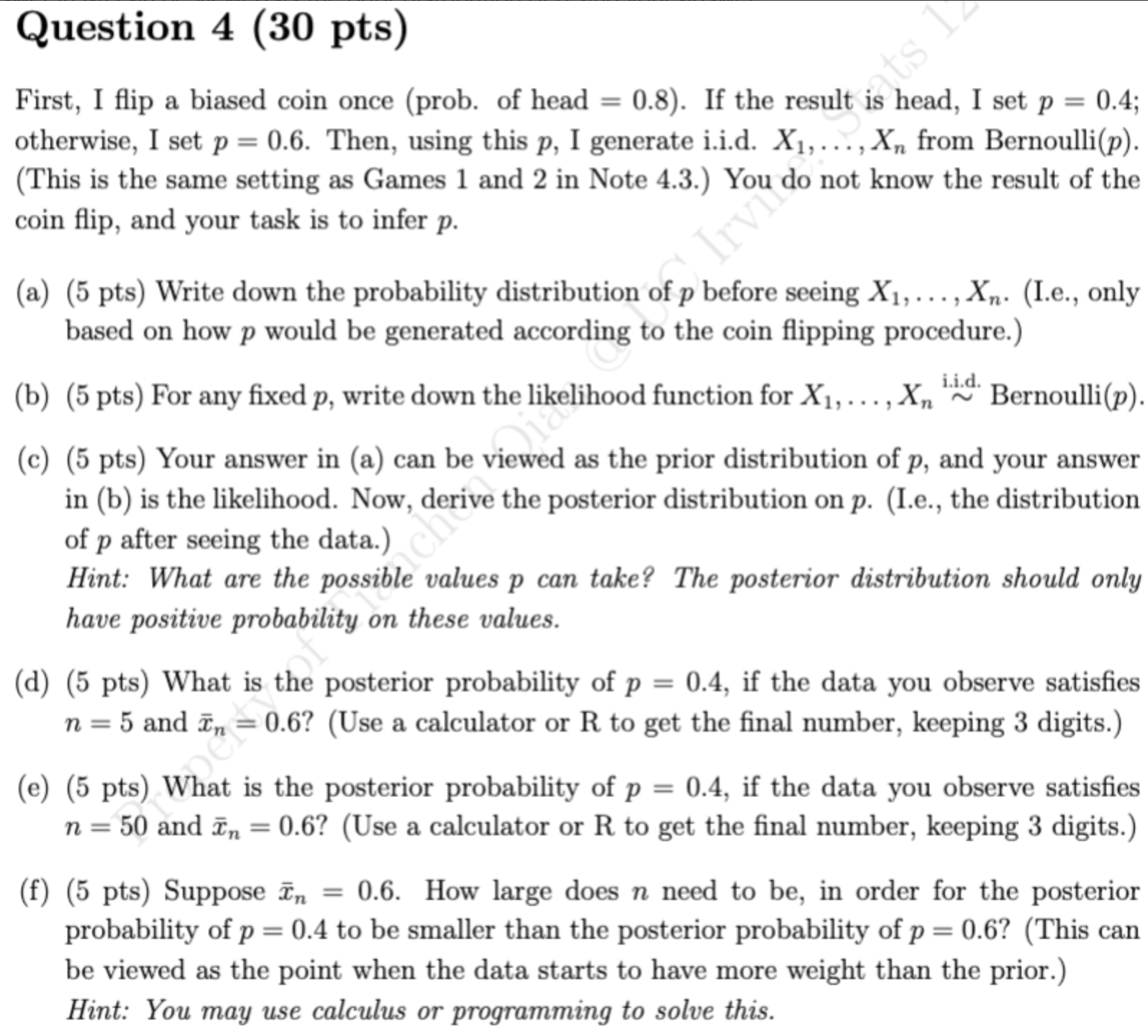Question
First, I flip a biased coin once (prob. of head = 0.8). If the result is head, I set p = 0.4; otherwise, I set
First, I flip a biased coin once (prob. of head = 0.8). If the result is head, I set p = 0.4; otherwise, I set p = 0.6. Then, using this p, I generate i.i.d. X1, . . . , Xn from Bernoulli(p). (This is the same setting as Games 1 and 2 in Note 4.3.) You do not know the result of the coin flip, and your task is to infer p. (a) (5 pts) Write down the probability distribution of p before seeing X1, . . . , Xn. (I.e., only based on how p would be generated according to the coin flipping procedure.) (b) (5 pts) For any fixed p, write down the likelihood function for X1, . . . , Xn i.i.d.? Bernoulli(p). (c) (5 pts) Your answer in (a) can be viewed as the prior distribution of p, and your answer in (b) is the likelihood. Now, derive the posterior distribution on p. (I.e., the distribution of p after seeing the data.) Hint: What are the possible values p can take? The posterior distribution should only have positive probability on these values. (d) (5 pts) What is the posterior probability of p = 0.4, if the data you observe satisfies n = 5 and ?xn = 0.6? (Use a calculator or R to get the final number, keeping 3 digits.) (e) (5 pts) What is the posterior probability of p = 0.4, if the data you observe satisfies n = 50 and ?xn = 0.6? (Use a calculator or R to get the final number, keeping 3 digits.) (f) (5 pts) Suppose ?xn = 0.6. How large does n need to be, in order for the posterior probability of p = 0.4 to be smaller than the posterior probability of p = 0.6? (This can be viewed as the point when the data starts to have more weight than the prior.) Hint: You may use calculus or programming to solve this.

Step by Step Solution
There are 3 Steps involved in it
Step: 1

Get Instant Access to Expert-Tailored Solutions
See step-by-step solutions with expert insights and AI powered tools for academic success
Step: 2

Step: 3

Ace Your Homework with AI
Get the answers you need in no time with our AI-driven, step-by-step assistance
Get Started


